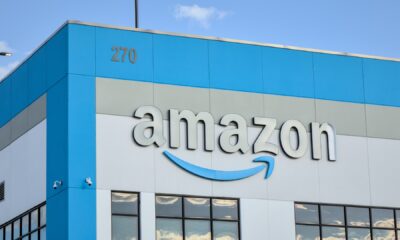MARKETING
Why Every Business Needs a Desk Reservation System?

A reservation system is a software program that allows you to manage bookings or appointments in an office. An Online Booking System enables employees to make reservations and bookings online and simplify their repetitive tasks in the workplace. A desk reservation system is essential for a club, fitness room, gym, yoga class, playground, and leisure hub.
A prospective customer can book and pay for a service remotely through a webpage using the Desk web interface and mobile app. It can digitally manage all clients’ schedules and activities on your business premises. It allows them to schedule a slot for the services (whether an in-house course or an online session), including selecting the day, hour, and payment for the reservation and subscription administration. It significantly minimizes your staff’s burden and eliminates the possibility of double bookings.
What are the Advantages of Using Desk Reservation System?
The internet boom changed every industry worldwide. Every organization must now have a distinct online footprint. Not only does current technology help enterprises in becoming more visible online, but it also makes it easier for them to turn traffic into revenues via an online booking system.
Boosts Your Online Reservations
Among the essential advantages of the Desk space reservation software is that it is constantly available and accessible. Your business can accept reservations anytime, so your consumers shouldn’t have to wait till the next day to set an appointment or transfer to one of your competitors.
Guests can schedule their appointments during their convenient time, and you can receive reservations while you sleep. It removes the hassle of contacting your receptionist for information or personally going to the business establishment to inquire about an appropriate time slot. Your company can keep its schedules packed all year long.
Conserves Time
By transferring booking-related duties to an automated system, room booking systems integrations allow you to do more with less. You can send automated alerts to your customers using a booking system.
You won’t have to phone your visitors for notices or make follow-up emails when using the platform. It can be time-consuming and can significantly decrease no-shows and revenues! With the desk reservation software, your team can perform efficiently by concentrating on providing your customers with the most incredible unique experience.
Simplifies Your Business Processes
Consumers want immediate responses when they search for information or book a reservation. Hence, an online booking system can assist you in providing your customers with quick replies to their inquiries. Booking software can help businesses by providing customers with a real-time interface when seeking products and services.
There will be lesser queues at the front counter, and you won’t have to say “one second” to a client who is ready for you to get off the line. Eliminate the complexities of reservations by automating them with booking software that includes a waitlist management option.
Expands Your Business Internationally
If there’s one lesson the Pandemic year 2020 has taught us, having a physical location shouldn’t prevent you from expanding your reach beyond your zip code. Enterprises have evolved as well; with everything getting online, your only way to compete is to increase your business’ online presence.
Integrating virtual meeting programs like Zoom or Google Meets is possible with an online booking system. Because of the online arrangement, people from all over the world can schedule your services!
Provides Actionable Business Insights
A reservation software keeps a record of every booking and its details. You can use statistics to determine what types of reservations make the most revenue, learn more about your loyal consumers, and better grasp the working capital. You can create data-driven decisions and grow your company with online booking technology.
Gives You an Advantage Over Your Competitors
A few companies get an online booking system in place, even though they already have a webpage to accommodate more customers. You’ll be ahead of the competition whenever you compare and contrast your capabilities to those of your rivals now that you have an online reservation system.
However, having a reservation system isn’t enough to create or turn an inquiry into revenue. To keep leads interested in your services, revamp your website with videos and photos of what you can offer. This way, it will entice viewers to click on the information they seek in your business.
What is a Desk Reservation App?
A desk booking app allows customers to book an office desk, a conference room, or a venue hall using a few taps of their fingers. You can use it in the office to assist employees in finding and reserving seats available ahead of or as they arrive in the workplace.
It gives people information — such as the status and position of workstations — and a feeling of competence in their workday by sharing the knowledge and resources they need to perform their tasks and collaborate with colleagues near their workstations. It enables less contact with people and devices because they reserve a desk with their smartphone.
With a desk booking software, your employees may see several workplace possibilities and choose the one that best suits their particular tasks at the moment, preferences, innovation, concentration, and efficiency. A desk reservation app answers various workplace managerial challenges in today’s modern office layout.
For starters, it enables staff to choose where they want to work during the day so that they may communicate with their coworkers while remaining within a safe distance. The desk reservation system has an automatic desk sanitation feature that sends notifications to the appropriate department to disinfect the workstations before the following booked reservation checks in.
Since end-users are constantly using the product, your desk booking system will gather additional information, which workplace leaders can use to track space occupancy. You can modify your reservation, cancel, swap desks, or reschedule your days in the office.
Takeaway
Whenever considering software automation, consider the initial investment, time, energy, and money, and the possible benefits to your business. There is indeed a period of adjustment with a ticketing system. However, the most excellent scheduling software business should offer customers all of the assistance you require to launch.
For all organizations, booking systems are improving both ongoing and prospective reservations. For companies, deploying the office space booking software is safe, simple, and more valuable to operate than before. Finally, it regularly updates and adds more features to benefit your business. It can be easy for customers to understand and follow its navigation process when they visit your website. One of the best hoteling desk reservation systems or desk booking software is the DeskFlex desk booking software technology.

















You must be logged in to post a comment Login